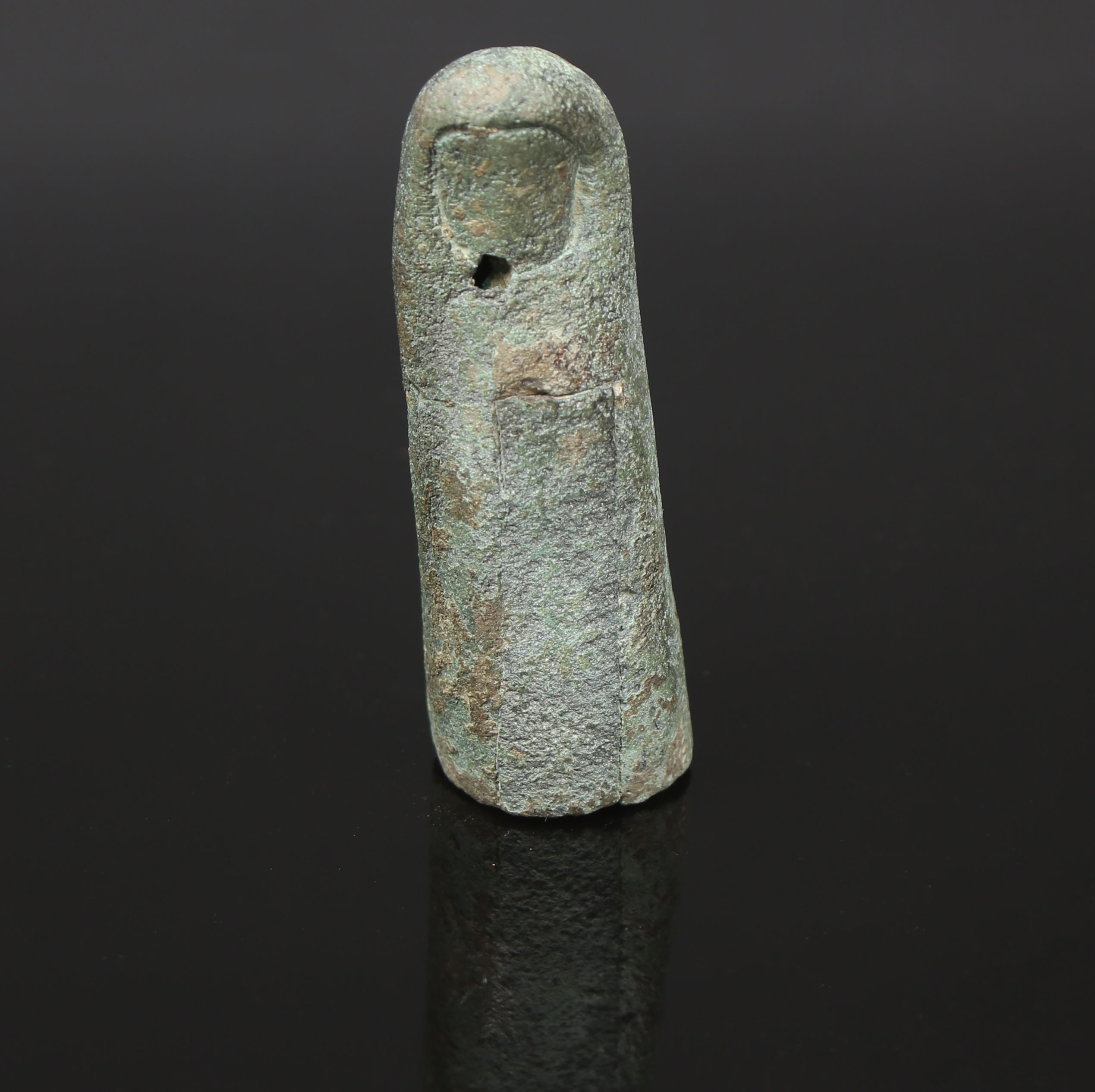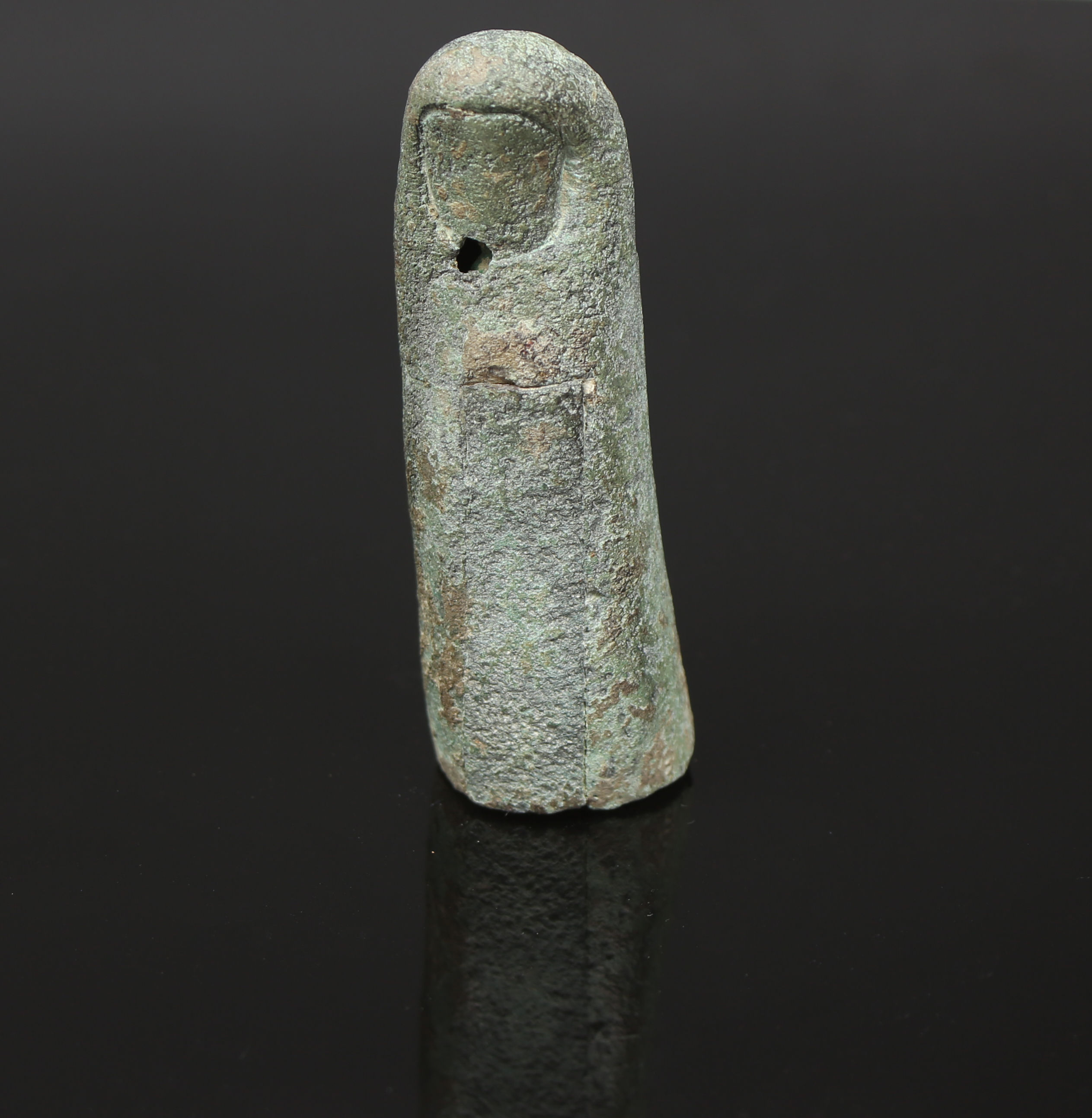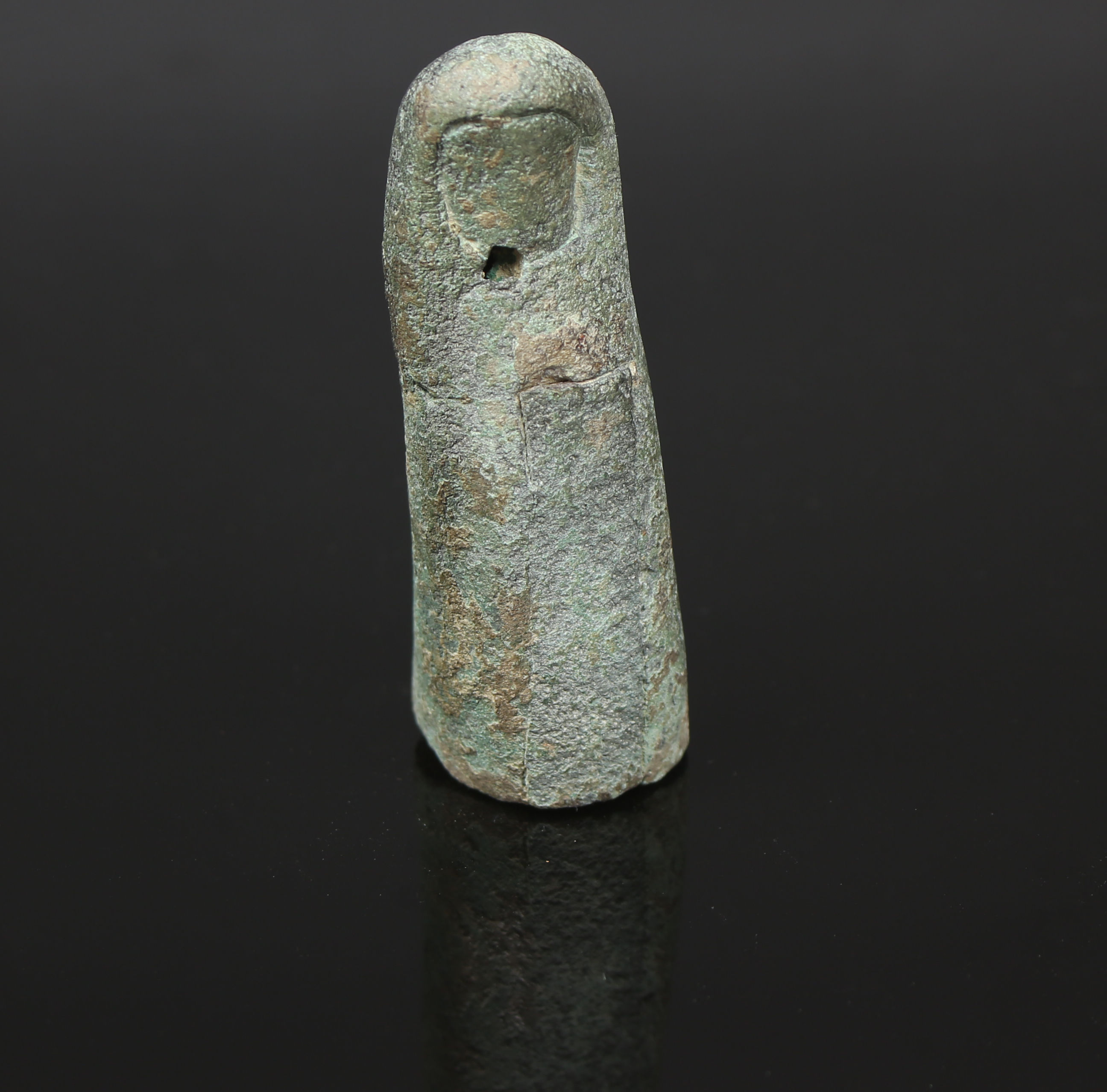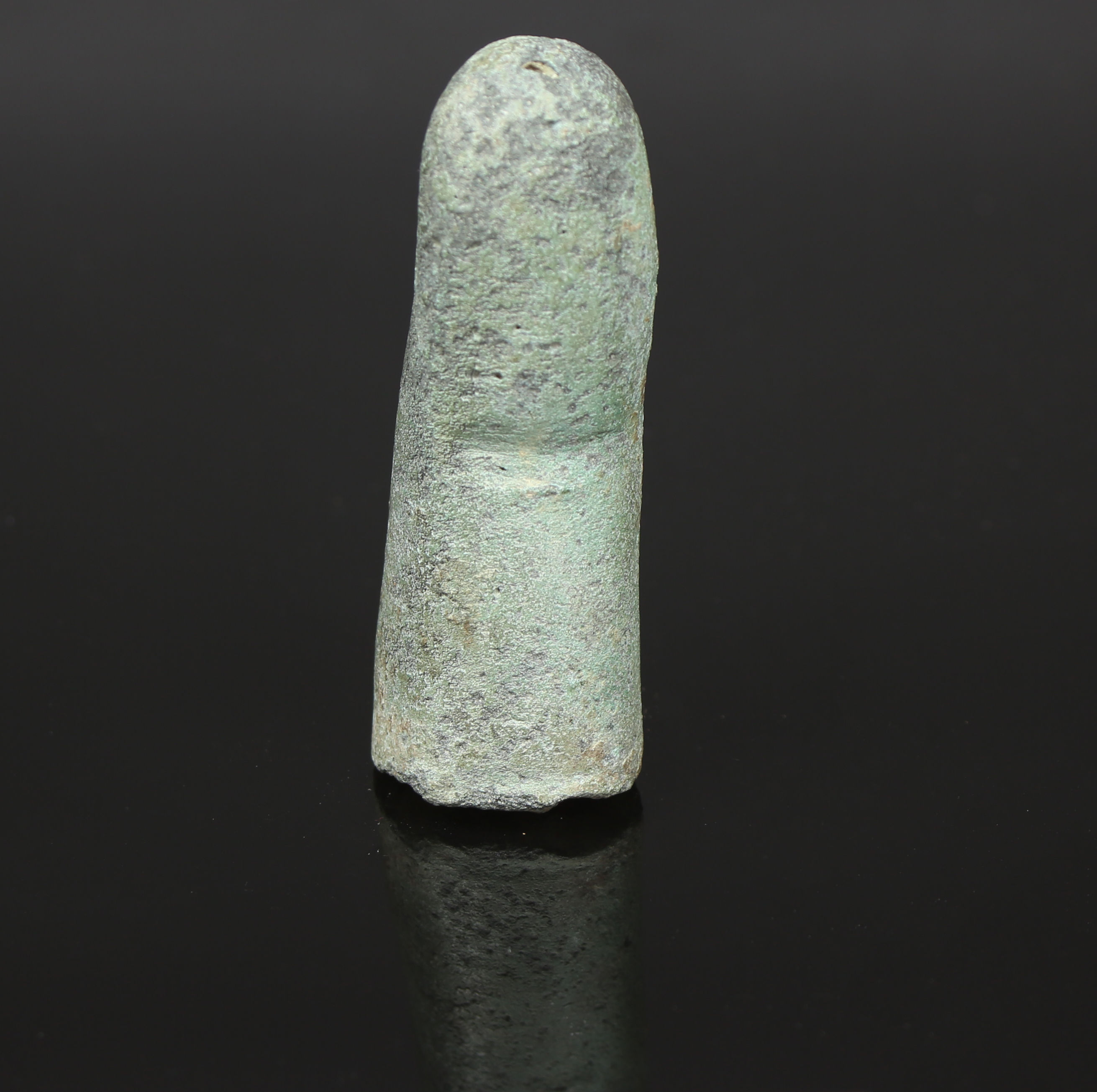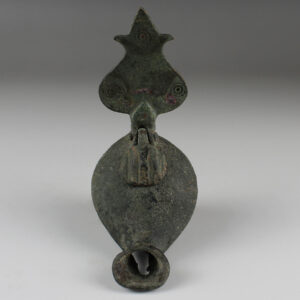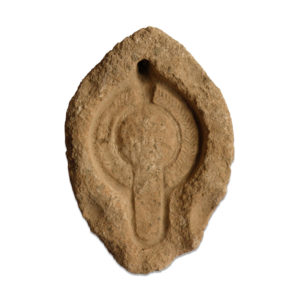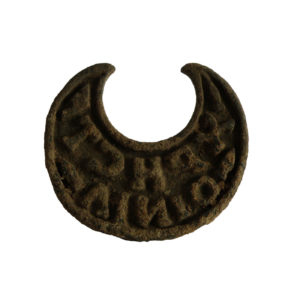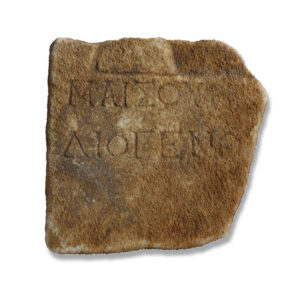Description
| ITEM | Finger fragment |
| MATERIAL | Bronze |
| CULTURE | Roman |
| PERIOD | 1st – 3rd Century A.D |
| DIMENSIONS | 65 mm x 26 mm, Life-size |
| CONDITION | Good condition |
| PROVENANCE | Ex Belgian private collection, acquired between 1970 – 1990 |
Roman bronze statuettes represent a rich and diverse artistic tradition that flourished throughout the Roman Empire. These small-scale sculptures, typically ranging in size from a few inches to several feet tall, encompass a wide range of subjects, styles, and functions. Bronze statuettes served various purposes in ancient Roman society, including religious worship, civic commemoration, decorative ornamentation, and personal devotion.
One of the most common subjects depicted in Roman bronze statuettes was gods and goddesses from the Roman pantheon, as well as figures from Greek mythology. These divine and mythological figures were venerated in temples, household shrines, and public spaces, and bronze statuettes served as tangible representations of their power and presence. Additionally, bronze statuettes of emperors, political leaders, and military commanders were created to commemorate their achievements and reinforce their authority.
Bronze statuettes also played a role in domestic life, serving as decorative objects, status symbols, and talismans for protection and prosperity. Wealthy Romans often displayed bronze statuettes in their homes as signs of refinement and cultural sophistication. These sculptures depicted a wide array of subjects, including human figures, animals, mythological creatures, and everyday objects. Bronze statuettes were sometimes given as gifts or offerings to mark significant life events such as births, weddings, or funerals, underscoring their importance in Roman social and religious practices.


